“We do not remember days, we remember moments.”- Cesare Pavesse Italian poet
In 1826 Nicephore Niepce produced the first photograph. It depicted a view from his window in the French countryside. Exposure time was eight hours. Thanks to smart phones almost 200 years later, an estimated 3.2 billion photos are taken worldwide daily.
First photograph created by Nicephore Niepce in 1826
As a youngster my first camera included a spring-loaded shutter, a plastic lens and a cool black body. After sending in 10 Sugar Candy wrappers, the camera arrived weeks later. My first roll of 126 mm, black and white film captured fuzzy images of our dog and wide-angle shots of the backyard. The exposed film was taken to Hank’s Pharmacy, and weeks later the prints arrived. I was hooked.
No matter what the format, photography conjures an aura of magic. The photograph captures time, freezes it in fact. If we think of our time on the planet as a series of second-long sequences, photography stops the progression. The closest thing to immortality.
When disasters hit, people are quick to save photographs. The images represent a visual path to the past. A comfort when confronting loss. Visual slices of life from our personal journeys. Photographer Ty Holland says, “A photograph is the pause button on life.” I like this perspective since I like to wander.
Photography offers a myriad approaches to subjects – landscapes, portraiture, weddings, corporate promotion, photojournalism, you name it. In addition to these topics, I am drawn to something called street photography.
My idea of a good time is rising at 5:00 a.m. finding a cup of coffee and exploring an urban scene with a camera. People are busy starting their day fully engaged in the upcoming events. And the early hour makes it’s fairly safe to check out back alleys and intriguing neighborhoods. This yearning to wander has taken me to many cities – places like Dublin and New York City. In Havana I ended up at the Estadio Latinoamericano where talented baseball players were warming up for the day’s game. In Washington D.C. I was photographing at various embassies when I walked into the National Geographic headquarters to use the bathroom and stayed to meet a man who photographed penguins underwater at the Artic Circle. And in Belfast, British soldiers confiscated my film.
There is something about a city. You walk out the door, and instant drama awaits. Thousands of people with solitary purpose maintain a communal web of social expectations – the perfect setting for a photograph.
Youngsters enjoying a thrilling ride in SF Chinatown - Photo by F. Lyons
In terms of street photography, I am always amazed at the leeway people give to folks with cameras. Perhaps it is part of the social web we create in cities. The point being that I have never had a person object to being photographed. However, with portrait style or close-ups I ask permission.
The urban landscape provides both orientation and mystery for a curious photographer. Take San Francisco. You have the Embarcadero along the Bay, and you can walk up a few blocks and find yourself at the Museum of Modern Art. In the Mission District there are the expressive murals in locations like Balmy and Clarion Alleys a short distance from Guerrero Street.
Moody image taken from the Embarcadero toward Bay Bridge - photo by R. Brown
As a photo instructor at Sierra College, I was afforded the opportunity teach a workshop entitled “Cityscape Photography”. In addition to scouting picturesque sites, the curriculum required backgrounds of noteworthy urban photographers like Henri Cartier Bresson. Bresson’s legacy included the concept of the decisive moment. In the constant flow of events, there are moments when the arrangement of everything within the frame is perfect. I know, pretty esoteric stuff.
Simply put, photography is about chasing light. The word literally means “writing with light.” In that hunt for the decisive moment, one must pay homage to luminance, composition, shutter speed and something I call “heart.” I like to think of “heart” as visual intrigue which draws the viewer’s eye to the subject.
Classic Henri Cartier Bresson image from the 20th Century. A decisive moment captured with light, composition and movement - Photo by H. Bresson
I realize the point is getting a bit in the weeds. This blog attempts to relate the joy of wandering in an urban setting and discovering the magically visual moments.
As my assignments continued, I began taking my classes to Sacramento. While preparing for the class I soon noted the visual delights of the nearby metropolis - Tower Bridge, Midtown, Sutter Health Park, Capitol Park, the Cathedral Plaza as well as the innovative R Street Corridor. One of most inviting subjects was the Open Walls project featuring local and international mural artists, both local and international. Sacramento with its riverfront, coffee shops and emerging galleries promised another chapter of urban discovery.
At some point I must note that wandering within the cityscape has become increasingly depressing, if not outright dangerous. With some planning and good timing, the journey can still be inviting. I recently spent a day exploring Sacramento’s Oak Park neighborhood. Where residents work and interact, visual attractions abound. Cities adapt to crisis. Things will improve. Consider the degradation and chaos I witnessed in Belfast.
Meanwhile, while in my later 70’s I still have that have the urge to wander with a camera. I do get up a little later and request one half decaf. Also, I enjoy the irony of being a very small-time farmer seeking urban odysseys. The journey continues.
Sacramento’s Jim Denny’s café. The local café opened in 1936 and closed in 2020. The owners plan to reopen the café in the spring. Photo by R. Brown
Installation of "Bliss Dance," a sculpture created by artist Marco Cochrane, SF Treasure Island - Photo by R. Brown
Three ladies in the Mission District taking a break after a long day - Photo by R. Brown
Dusk at the SF Palace of Fine Arts - Photo by R. Brown
Inspired writer in Nevada City during a break in a film festival - Photo by R. Brown
Jovial moment as SF police officers and Giants fan interact at Oracle Park - Photo by R. Brown
Author’s note:
With contemporary street photographers, I am drawn to two Bay Area gentlemen. J. Michael Tucker and Jerry Downs. Tucker takes risks in composition and subject placement to depict urban streets as mini theaters of joyful encounters. In researching I also discovered that Tucker is a confidant of Auburn’s own master photographer Keith Sutter.
SF street scene - Photo by J. Michael Tucker
The other photographer is Jerry Downs who has moved to San Rafael from San Francisco. Downs posts photos every day on Facebook, and he draws quite a response. In answer to a question by artist Amy Guion Clay regarding his entrance into photography, he said, “The thing I loved about taking pictures was that it was the best way I knew of to investigate and talk about what I was really interested in, life and the human experience. With photography, life itself is the palette you draw from.”





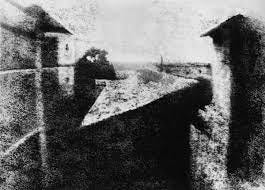

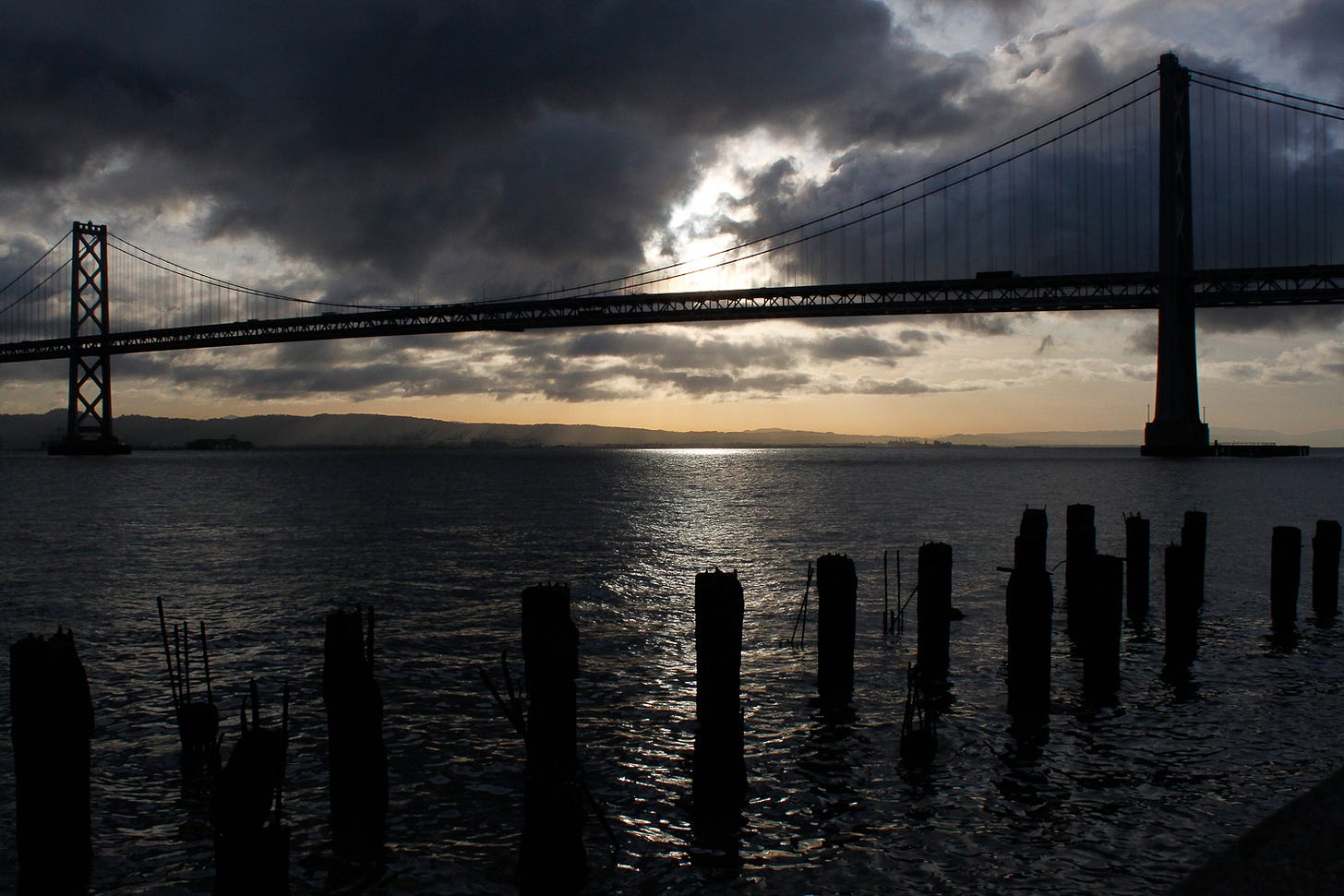
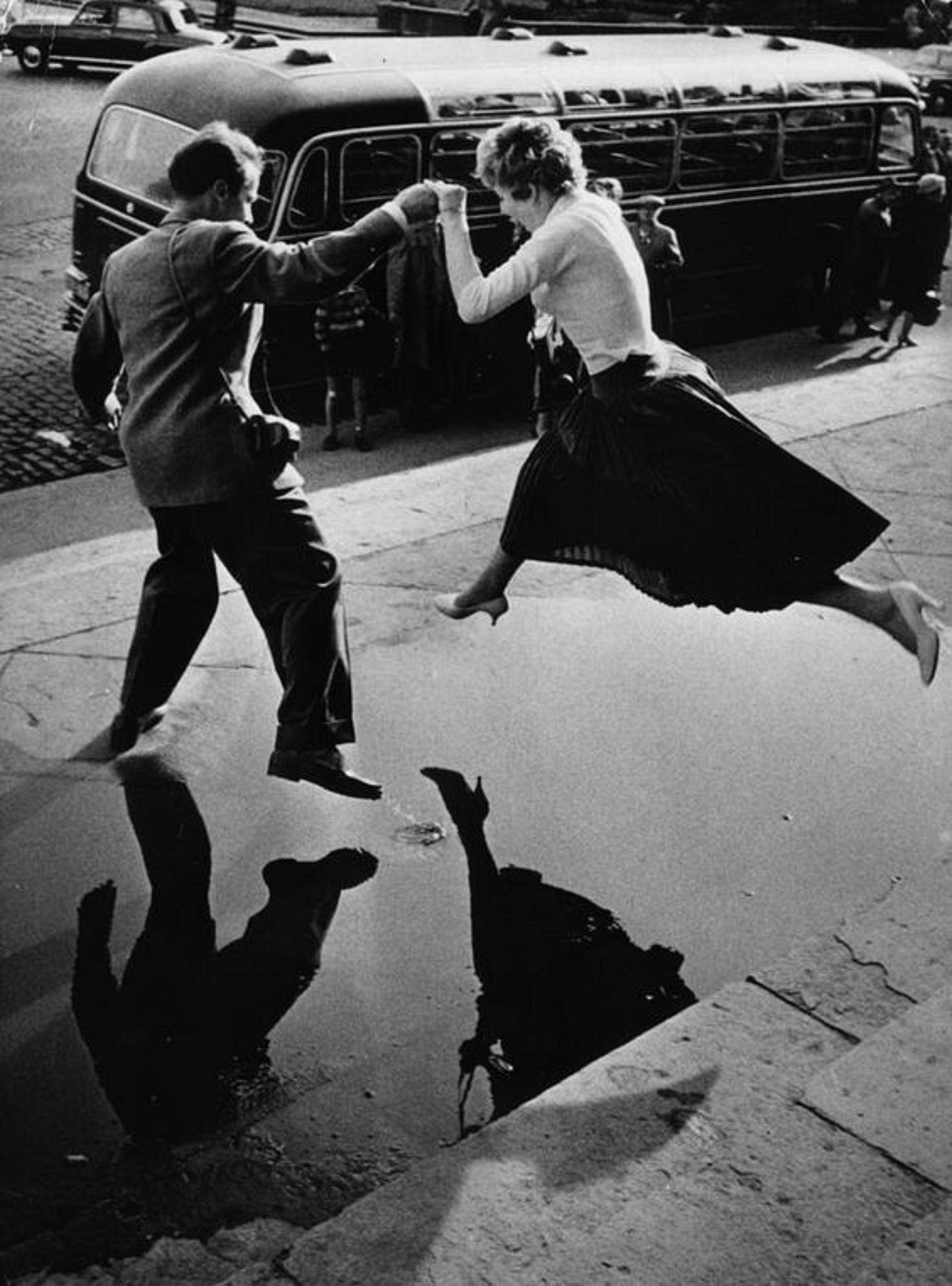
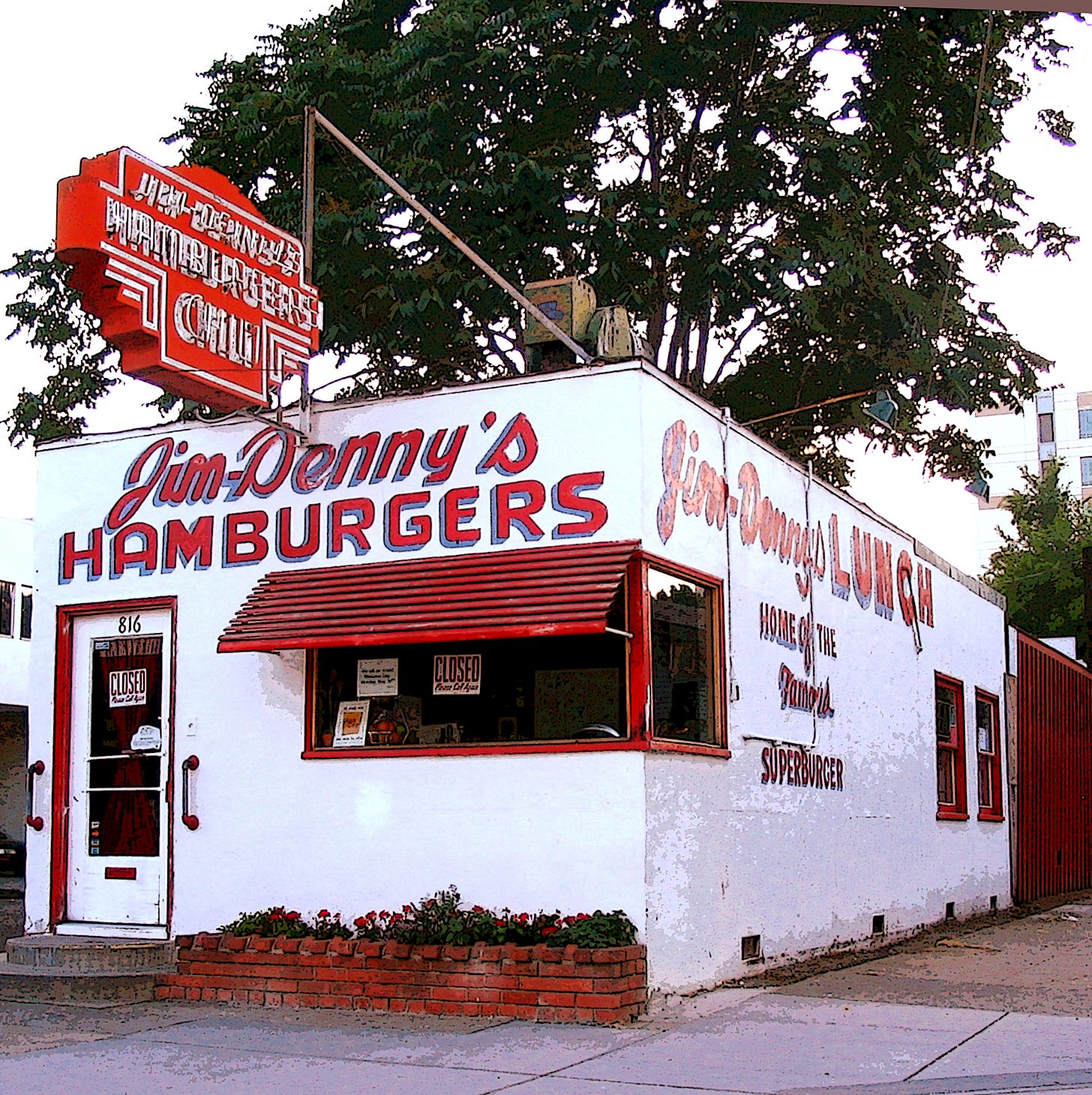

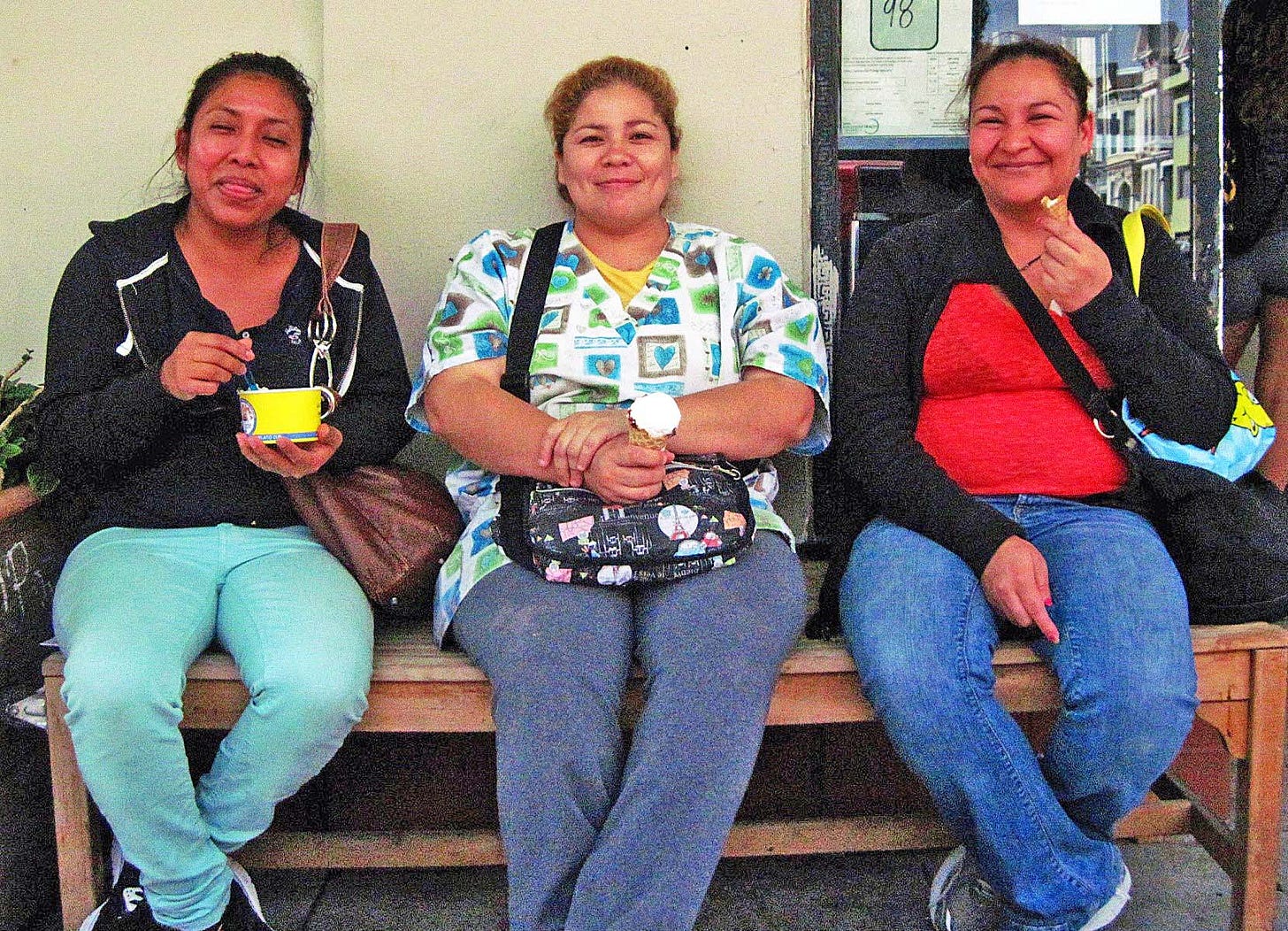

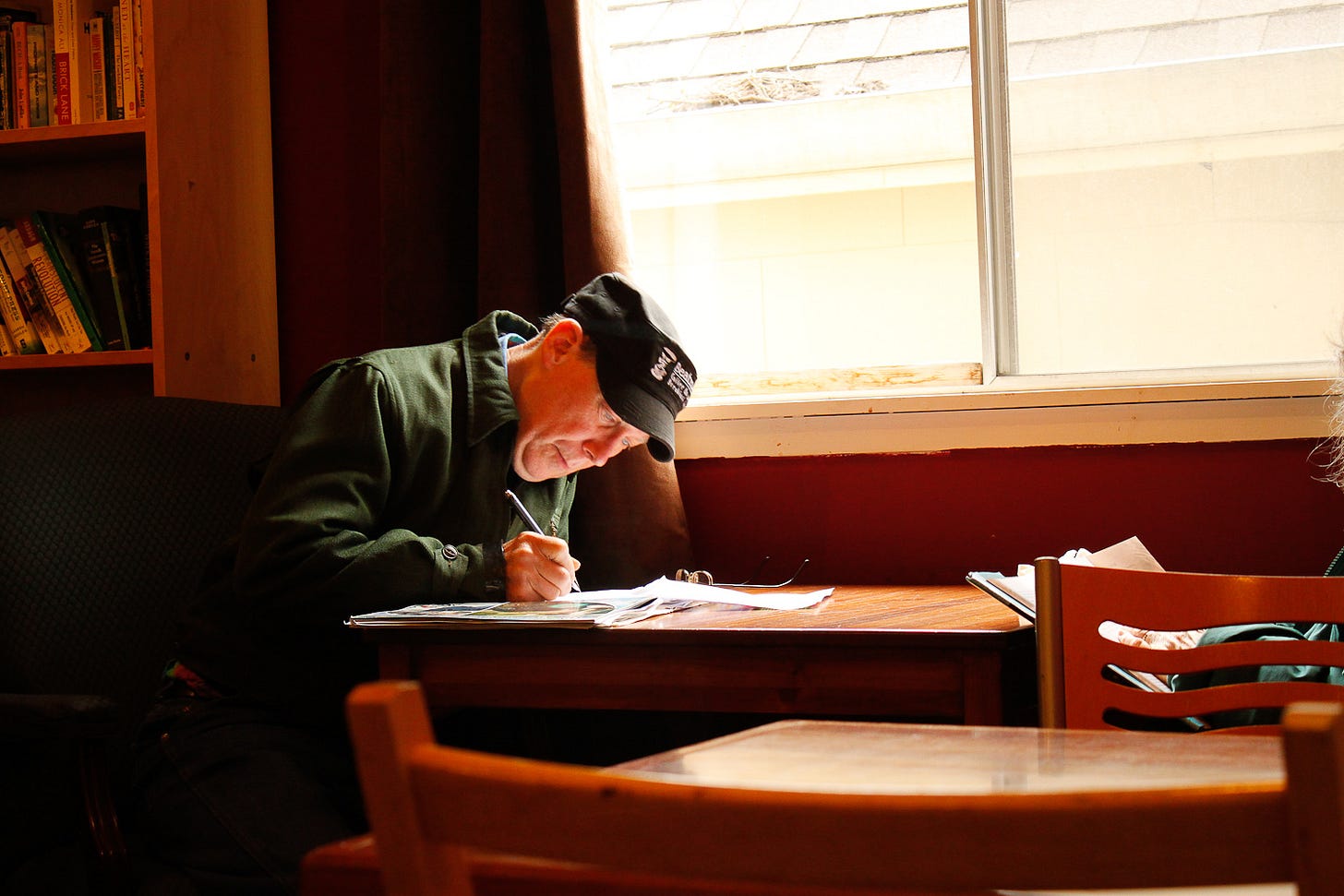

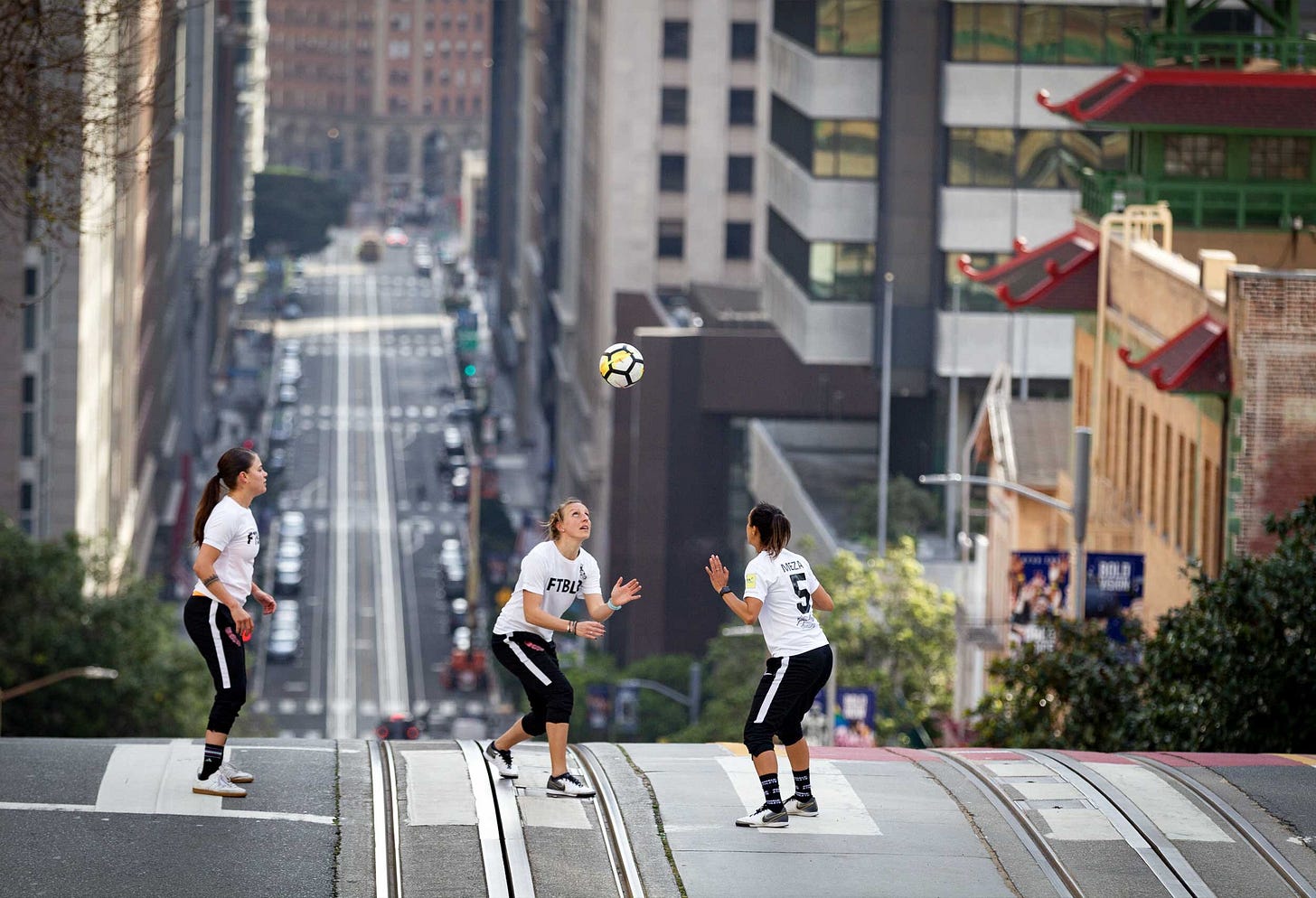

Ah, my old friend in his heart is a City boy, but lives in the country.
As he said, there is “irony” there.
Oh my goodness, what a wonder filled and enchanting writing. I do have "backstory" knowledge having known Rick through five decades and Rick with a camera is like Ruth and a bat, Taylor and a microphone, Monet and a paintbrush. I caught my mind wondering and predicting while reading this prose creating a few quick questions with a general theme asking, what pictures with such a vast cache of photos no doubt to choose would Mr. Brown share? Informative - Its all about the light - and exposing into Rick's soul - pardon the pun, this is a wonderful read indeed. Thank you for this piece. (PS, I am a couple weeks behind on readings and glad I chose to read this now while in a comfortable place.)